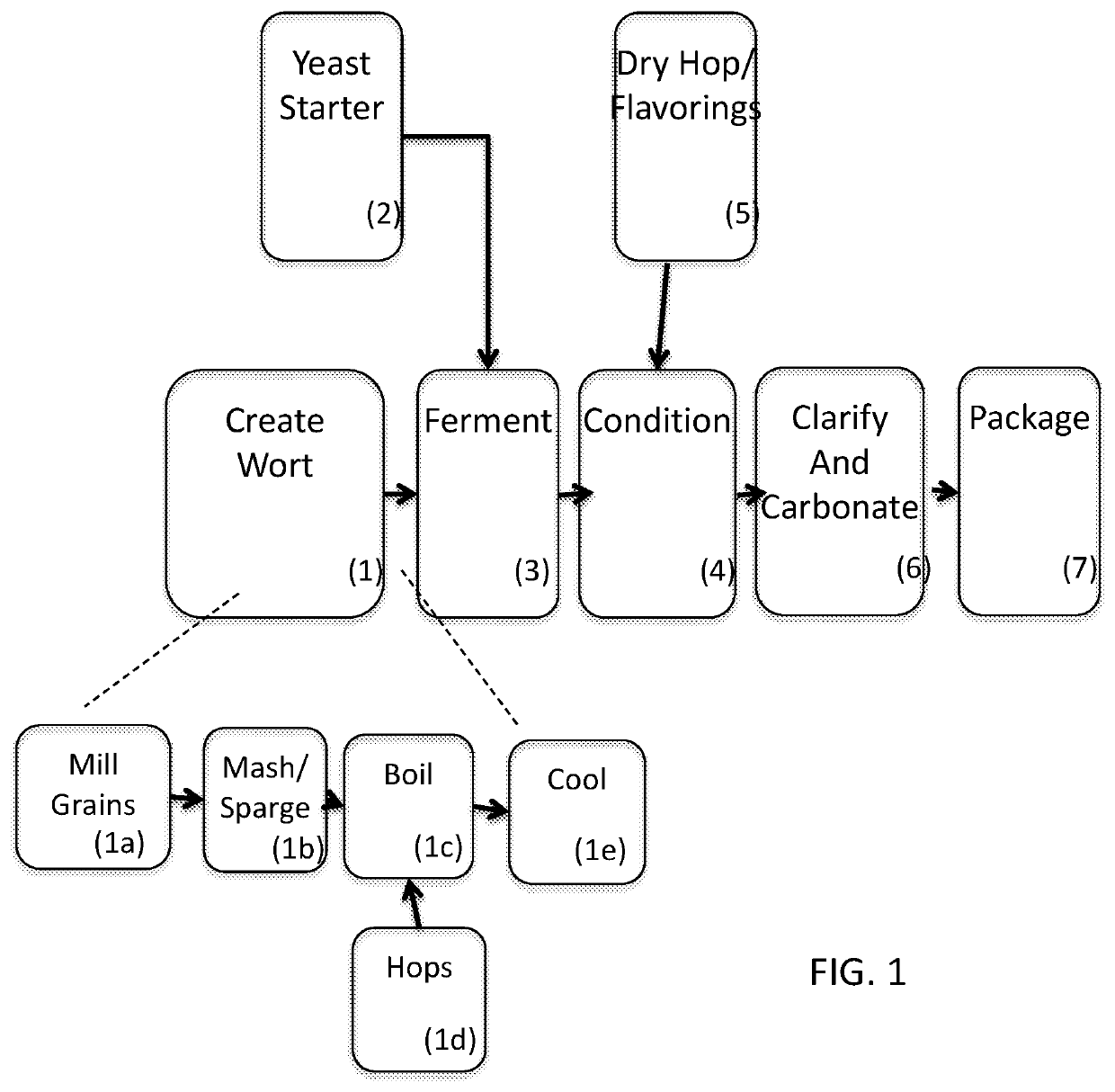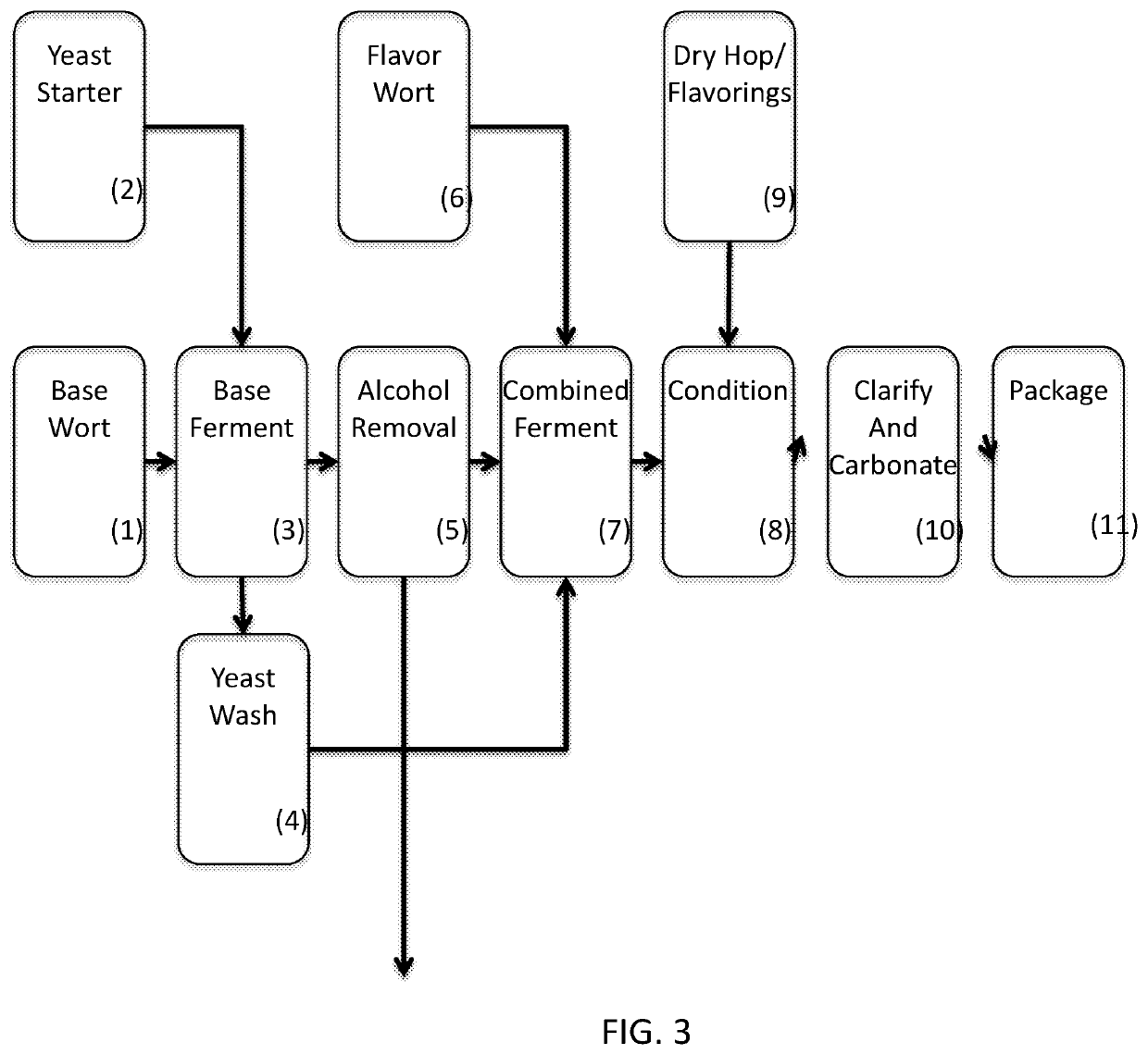Method for Creating a Craft Beer with Low Alcohol Content
a craft beer and alcohol content technology, applied in the field of craft beer, can solve the problems of complex beer, more flavorful, complex beer, yeast addition and calculation, etc., and achieve the effect of reducing the amount of alcohol in the beer, and improving the tas
- Summary
- Abstract
- Description
- Claims
- Application Information
AI Technical Summary
Benefits of technology
Problems solved by technology
Method used
Image
Examples
Embodiment Construction
[0083]FIG. 4 is an illustration of an example embodiment A of the invention, and will be referenced throughout this section. This embodiment combines the process of making an NA / LA beer with the process of making whiskey; both products are produced with little additional marginal effort compared to producing either one separately.
[0084]Base Beer. The first step in the embodiment is to create a Base Wort (FIG. 4, step 1). This wort is created like a standard craft beer wort, but it will include only a subset of the ingredients for the beer. The Base Beer will typically include the Base Malts, or the malts that create most of the Gravity of the final Combined Beer, but contribute only some of the flavors. There is an Original Gravity of the Base Beer, OGB that is calculated in the same manner as the OG of normal beer, including only the ingredients in the base beer:
OGB=1+∑i=1n Wi*GPGiVB(19)
Where
[0085]Wi=Weight of the ith Base Beer ingredient[0086]GPGi=Gravity per Pound per Gallon of t...
PUM
| Property | Measurement | Unit |
|---|---|---|
| volume | aaaaa | aaaaa |
| time | aaaaa | aaaaa |
| boiling | aaaaa | aaaaa |
Abstract
Description
Claims
Application Information
 Login to View More
Login to View More - R&D
- Intellectual Property
- Life Sciences
- Materials
- Tech Scout
- Unparalleled Data Quality
- Higher Quality Content
- 60% Fewer Hallucinations
Browse by: Latest US Patents, China's latest patents, Technical Efficacy Thesaurus, Application Domain, Technology Topic, Popular Technical Reports.
© 2025 PatSnap. All rights reserved.Legal|Privacy policy|Modern Slavery Act Transparency Statement|Sitemap|About US| Contact US: help@patsnap.com



